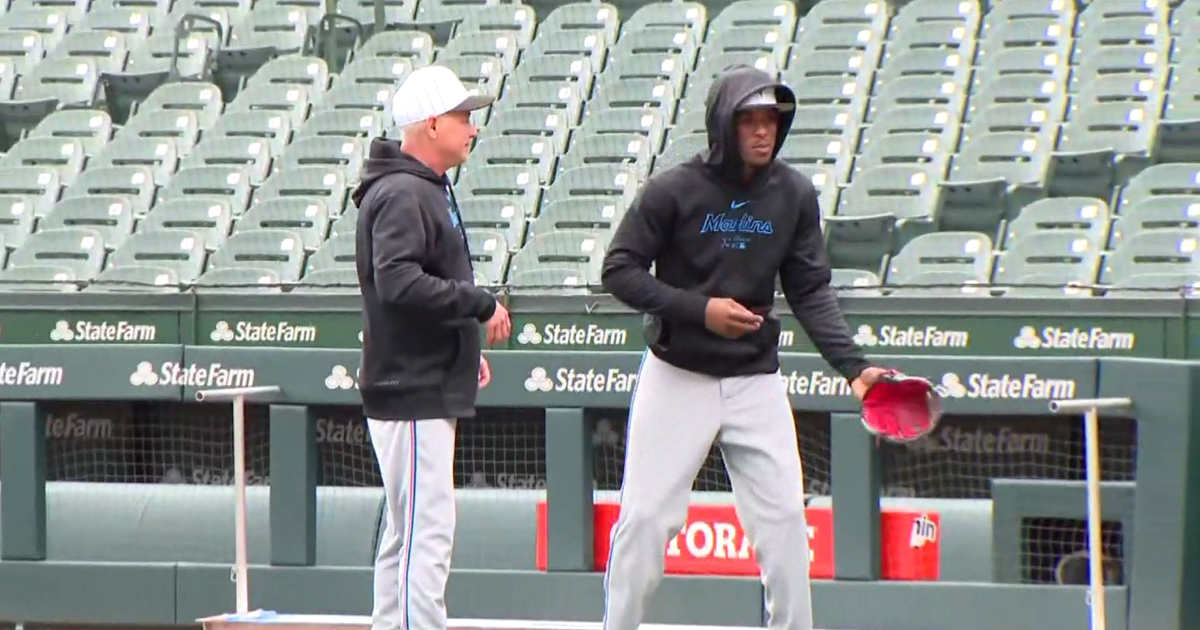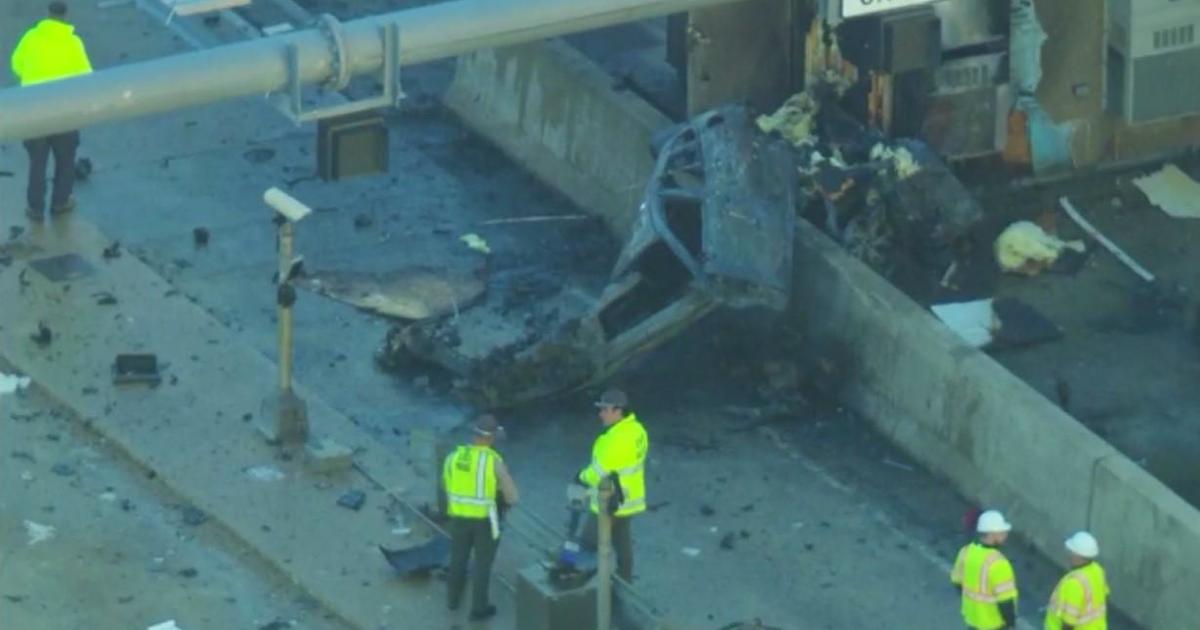Baffoe: Paterno Statue Can Teach Lessons
By Tim Baffoe-
(CBS) One of the few very true things they convey to potential teachers in college is that the most teachable moments come unexpectedly and cannot be planned for, and that oftentimes such moments arise from unfortunate circumstances. I had one of those moments last Thursday.
During the entire Jerry Sandusky trial and its aftermath I have felt that all the ugliness at Penn State University has been about more than just one monster. Instead it has been about the lack of proper action taken by others that fostered a monster, allowed the monster to systematically operate and prey on children.
Willful ignorance is as morally wrong as the crimes it perpetuates.
As more information continues to come to light, it seems that no person involved cultivated a culture of secrecy, a clandestinity that aided and abetted a serial child rapist, more so than former PSU head coach Joe Paterno. And while the most important thing regarding the university scandal right now is continued application of justice, bringing charges against the rest of the vile enablers like former president Graham Spanier, and helping the healing process for the victims, secondary to those matters is a symbol that exists with very polar meanings for many people, and one that many would like to see destroyed.
Despite an ESPN report to the contrary over the weekend, Penn State has no immediate plans to remove the statue of Joe Paterno that stands outside of Beaver Stadium. I am in favor of keeping the statue right where it is for as long as the university is open.
That probably clashes with most gut reactions. How can I want to keep a representation of a man who we now know embodied lies for so long and who helped to ruin the lives of several children, who stood atop the food chain of the biggest sports scandal of my lifetime? Well, because of his lies. Because he ruined lives. Because he was a despicable person for orchestrating the cover up of the most awful series of events in sports in my lifetime.
That needs to be remembered at all times for the rest of Penn State as a football program and the rest of Penn State as an educational institution. Hell, it's beyond just a program and a school. Not a person should pass by Beaver Stadium tomorrow, next year, or a hundred years from now and fail to see the "larger than life" bronze representation "honoring Paterno's contributions to the university."
Nobody should not have to question the evil behind the gentle smile or the real motivation behind the finger raised in the number one gesture. Whitewashing the scandal would go against much of the talk from university brass since Sandusky's conviction of making sure something like that not only never happens again but also is not remotely possible of happening again. Removing the statue would be an attempt to remove a symbol of the scandal, and thus not keeping a visible memory in order to remind everyone of what can happen when football becomes bigger than what is right.
Back to that teachable moment stuff I mentioned. Of late I've felt the Paterno statue should remain, but explaining that to people always has been met with wide eyes and mouths agape as though I were some rabid Nittany Lion apologist who favors football over the safety of children (and that is what every person is who doesn't believe Paterno was active in covering up Sandusky's crimes and put the reputation of the football program and school above raping kids—they each are someone who puts football above sexual crimes against children).
With such a scandal like what occurred at Penn State, the initial reaction for so many is solution by attrition. Burn every remnant of the awfulness to the ground. Throw away all the statistics, the wins, and the trophies. All memorabilia goes in the trash. Paint over the murals, remove the pictures, and take down the statues. Human nature is to want to destroy the objects of our hatred. If we remove them forever, put them out of sight and out of mind—and not instead attempt to learn from that which we hate—all will be well. I'd be lying if I said it wasn't my first response when it became evident that Paterno was very much responsible for the crimes at Penn State.
The classic example of such motivation is the novel Frankenstein, where the townspeople drive out the famous monster solely because of his superficial ugliness. Banishing him and removing him rather than attempting to understand their hatred of him, they believe, is the proper solution. What that foolishness does, though, is instead create more evil. Willful ignorance.
Frankenstein was written by Mary Shelley. Her husband was Percy Bysshe Shelley, one of the greatest poets of the Romantic Era. Now, it's pretty rare to get a Mr. Shelley reference outside of a British Lit. class or once a month on Jeopardy! Thursday, though, I heard a tweeter to the Boers and Bernstein Show bring up the parallels of the Paterno statue with Shelley's poem "Ozymandias." The text of the short poem is as follows:
I met a traveller from an antique land
Who said: Two vast and trunkless legs of stone
Stand in the desart. Near them, on the sand,
Half sunk, a shattered visage lies, whose frown,
And wrinkled lip, and sneer of cold command,
Tell that its sculptor well those passions read
Which yet survive, stamped on these lifeless things,
The hand that mocked them and the heart that fed:
And on the pedestal these words appear:
"My name is Ozymandias, king of kings:
Look on my works, ye Mighty, and despair!"
Nothing beside remains. Round the decay
Of that colossal wreck, boundless and bare
The lone and level sands stretch far away.
Like Mrs. Shelley's novel, I've taught her husband's poem several times, and every time it is met with general apathy by a class of teenagers. Despite that, they do for the most part eventually pick up the poem's general theme of the downfall of all leaders no matter how revered they were, no matter their positive accomplishments.
As it's my summer break from the classroom, my brain has been turned off for a month in a half to the application of great literature to real life, so the "Ozymandias" connection never entered my mind until Thursday. When I heard it, though, the first thing I thought of was my students.
See, one of the great things about teaching teenagers is that they are for the most part much more intelligent than society at large gives them credit for. When the Sandusky news broke during the school year, his name was sophomorically turned into a verb in the hallways pretty quickly, but without any influence from me most students interested in the scandal were quick to put blame on Paterno. They told me they wanted him fired, said his victories should all be wiped out, and called for the removal of his statue.
Kids usually see through BS. Stupid adults are who muddy the waters too often.
I get the desire by many otherwise sane people to have the Paterno statue removed from the stadium and ultimately our consciousness—people like St. Joseph's hoops coach Phil Martelli. It's natural to want to immediately jettison the bad to protect the collective good of humanity.
But keeping the statue in plain view, more specifically at the football stadium, will teach rather than help us forget. It will teach those who pass by it to look on Paterno's works and despair. Look at how a once-mighty coach—a man often described as a great teacher—succumbed to evil and put his football program and the name of a school above the safety of kids.
Round the decay of that colossal wreck sports fans will forever be reminded of what can occur when we misappropriate what is truly important. Its intact yet shattered visage will help a classroom of kids in Chicago understand that men who are allowed to become gods inevitably come crashing back to earth.
We must not try to remove what remains of the disgusting aspects of humanity. That will only help to perpetuate the ignorance we are decrying in the first place.
The lone and level sands of remembrance must be allowed to stretch far away, beyond Happy Valley, beyond athletics, beyond our own uncomfortability and pain to help make sure something as incredibly awful as what Paterno participated in will never happen again.
Tim Baffoe attended the University of Iowa and Governors State University and began blogging at The Score after winning the 2011 Pepsi Max Score Search. He enjoys writing things about stuff, but not so much stuff about things. When not writing for 670TheScore.com, Tim corrupts America's youth as a high school English teacher and provides a great service to his South Side community delivering pizzas (please tip him and his colleagues well). You can follow Tim's inappropriate brain droppings on Twitter @Ten_Foot_Midget, but please don't follow him in real life. E-mail him at tenfootmailbag@gmail.com. To read more of Tim's blogs click here.




